Rocky Mountain National Park is one of the most visited National Parks in the US and hiking is the number-one activity here. You don’t have to be climbing a 14er or embarking on day long hikes at RMNP, you can be just walking on the easy trails around peaceful lakes and wildflower meadows to enjoy the scenery and crisp mountain air – Rocky Mountain National Park has something for everyone!
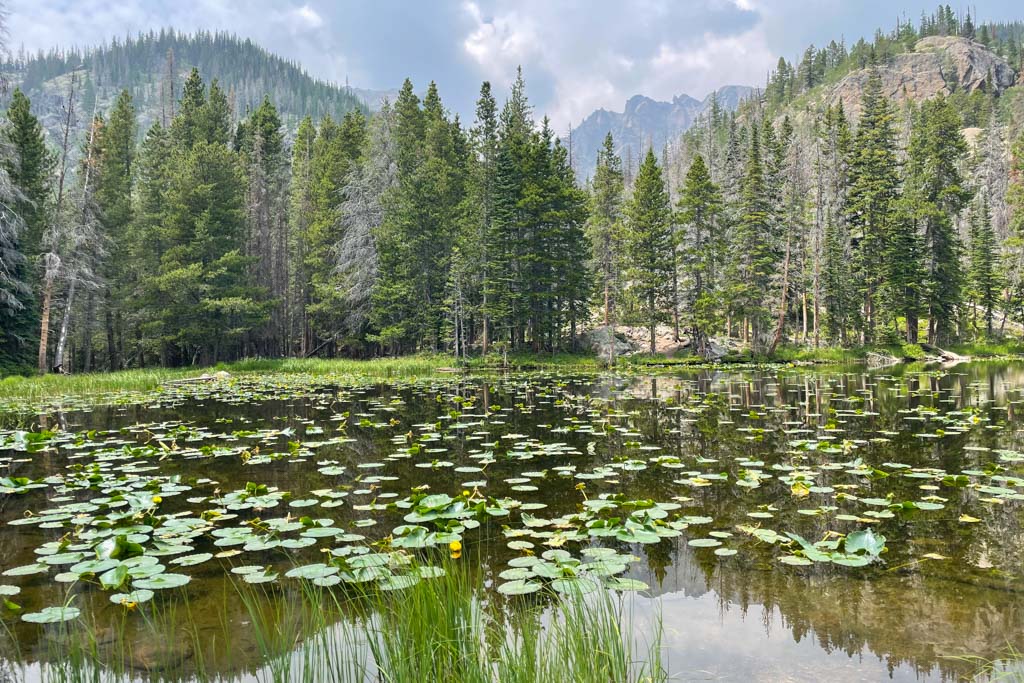
Recently, when I was in Seattle, Mr. Suburbia and Ms. Peachy had gone to Dad & Daughter trip to Denver and did a few hikes at Rocky Mountain National Park. While we have been hiking in Vail, Maroon Bells, and Breck, this was the first time in RMNP. This post is a list of hikes at a variety of skill levels, from easy to moderate at RMNP. I hope you find it useful when planning your trip to Colorado!
If you have just one day in Rocky Mountain National Park, try the Emerald Lake hike. It begins from the Bear Lake Trailhead, located at the end of Bear Lake Road, 9 miles from the turn-off at Highway 36. It is a great hike if it is your first time at RMNP and is perfect for families.
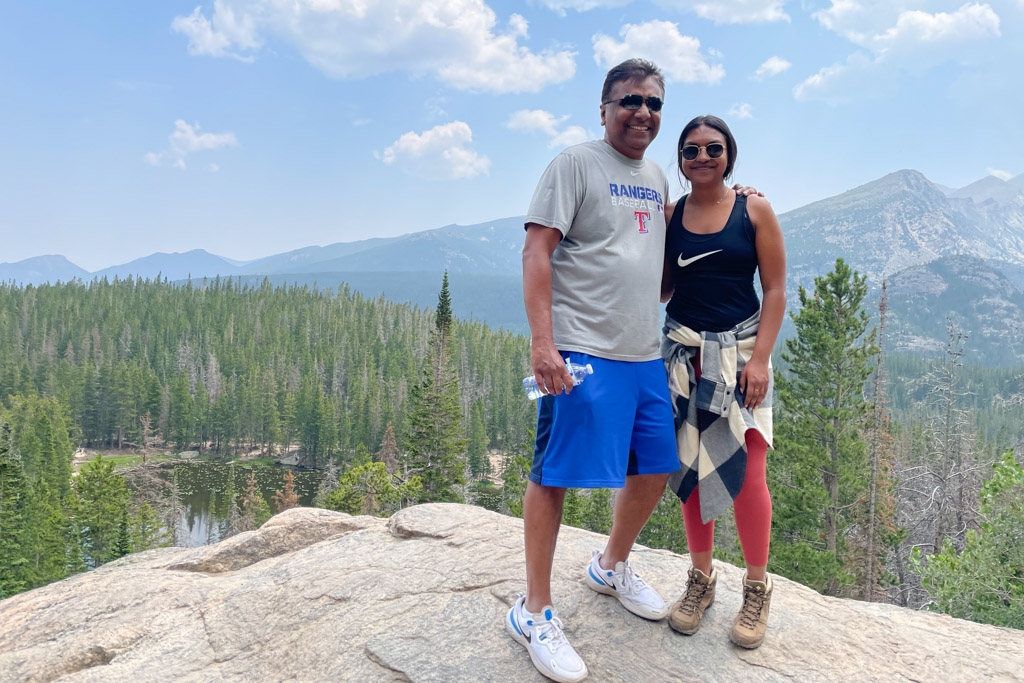
WHAT IS IN THIS POST
Rocky Mountain National Park Fun Facts
- You are on top of the world, Rocky Mountain National Park is one of the highest national parks in the USA.
- The RMNP’s Alpine Visitor Center sits at the highest elevation of all National Park Service sites.
- There are 60 mountain peaks over 12,000 feet in RMNP.
- Longs Peak, at 14,259 feet, is the only fourteener in the park.
- The Continental Divide runs north south through the park.
- Called a “scenic wonder road of the world,” Trail Ridge Road is the highest paved through road in the national park system.
- Rocky Mountain is one of country’s top wildlife watching destinations.
- Be prepared to see an amazing range of landscapes in a short distance.
Several ecological zones can be seen in RMNP. Montane which is the lowest zone(located on the slopes from 5,600 to 9,500 feet) has the richest diversity of plants and animals.
The subalpine region (9,000 to 11,000 feet), is where you will find evergreen forests, crystal clear lakes, meadows and wildflowers. Trees disappear and temperatures drop at the alpine tundra areas of the park (above 11,000 feet). Approximately one-third of Rocky Mountain National Park is part of the alpine tundra.
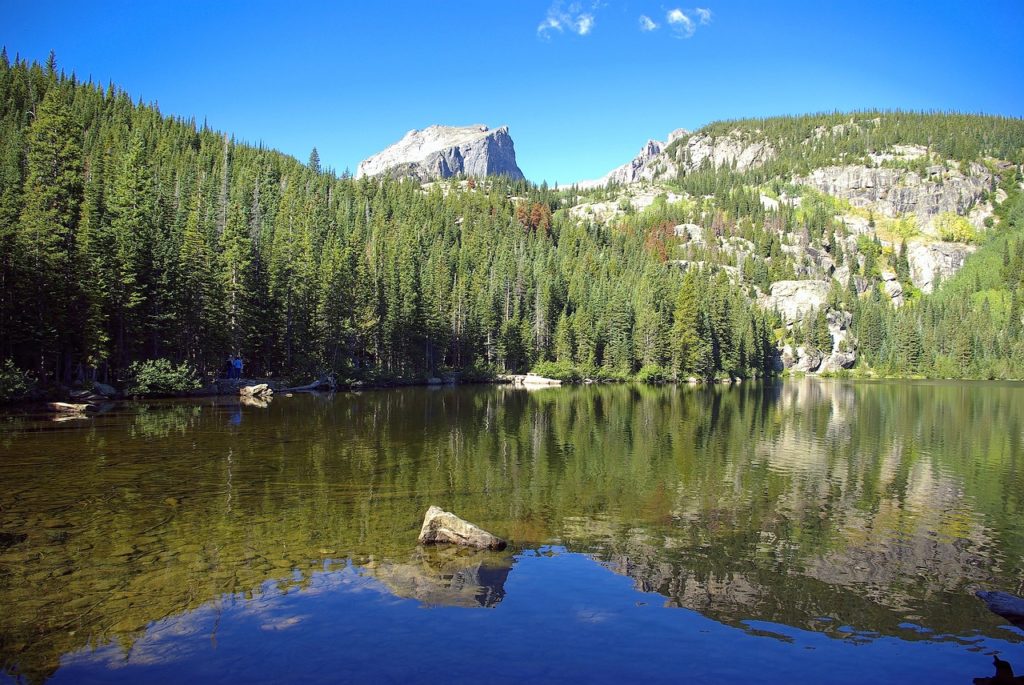
How many days do you need to visit?
Three days in Rocky Mountain National Park would be nice – you can go a few hikes, drive on a few scenic drives and get some highlights in.
Five days to a week in Rocky Mountain National Park would be perfect if you have the luxury of time. This gives you enough time to get used to the higher elevation (especially if you come from a flatland like us). This will give you enough time to plan out a few hikes and other things to do in Rocky Mountain National Park like Alpine Lake, Emerald Lake, or Gem Lake Trail and even some tackle some tougher hikes (such as Mount Ida, Hallett Peak, or Longs Peak).
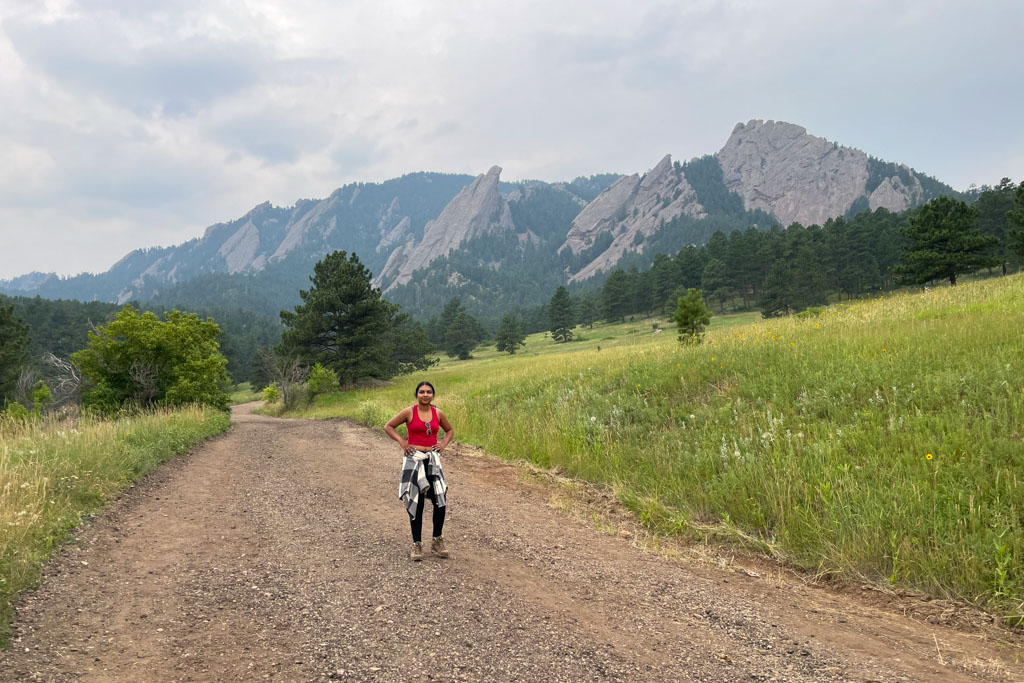
Best things to do in Rocky Mountain National Park
1. Top Rocky Mountain National Park Hikes
Most visitors enter the park via Estes Park and the main entrance, Beaver Meadows. The other three entrances to RMNP are Fall River and Wild Basic on the eastern side and Grand Lake on the western side.
Starting with short, easy hikes and ending with long, strenuous ones for the serious hikers, here are some of the best hikes at Rocky Mountain National Park. All distances mentioned are round-trip.
Bear Lake Loop
Hiking Distance: 0.5 miles
Trail Difficulty: Easy
Approx Time Needed: 30 minutes to 1 hour
Location: Bear Lake Trailhead
Bear Lake is the best easy hike in Rocky Mountain National Park and one of the park’s most popular destinations for first-time visitors. On this popular family friendly trail, you will see dramatic glacial valleys and massive mountain summits. Hike counterclockwise and follow the trail, stop at all 30 marked spots along the route to enjoy the views. Many other trails also start here.
Alpine Ridge Trail
Hiking Distance: 0.6 miles
Trail Difficulty: Easy
Approx Time Needed: 30 minutes
Location: Alpine Visitor Center on Trail Ridge Road.
This very short hike takes you to a panoramic viewpoint of Rocky Mountain National Park. On this hike located next to the Alpine Visitor Center, you will be rewarded with amazing views of the Rocky Mountains.
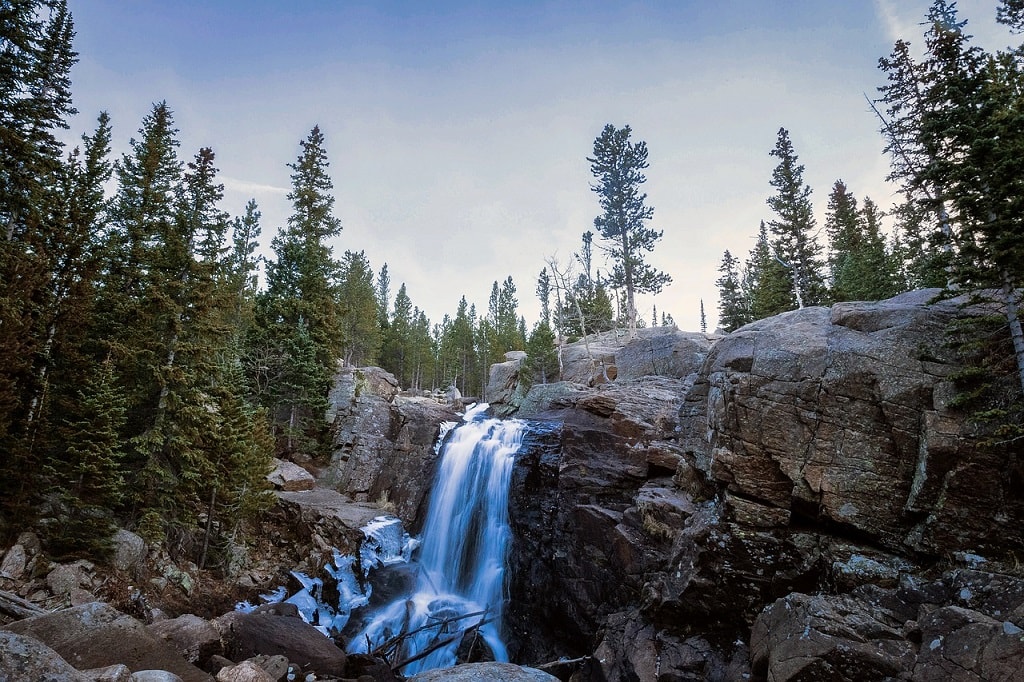
Alberta Falls
Hiking Distance: 1.7 miles
Trail Difficulty: Easy
Approx Time Needed: 1 to 1.5 hours
Location: Glacier Gorge parking lot on Bear Lake Road.
To get a parking space here, plan on arriving no later than 6:30 am or earlier. If the parking lot is full, park in the large parking lot at the end of Bear Lake Road. From the Bear Lake Trailhead, follow signs to Alberta Falls. Parking in the lot at the end of Bear Lake Road adds roughly .5 miles to the hiking distance above.
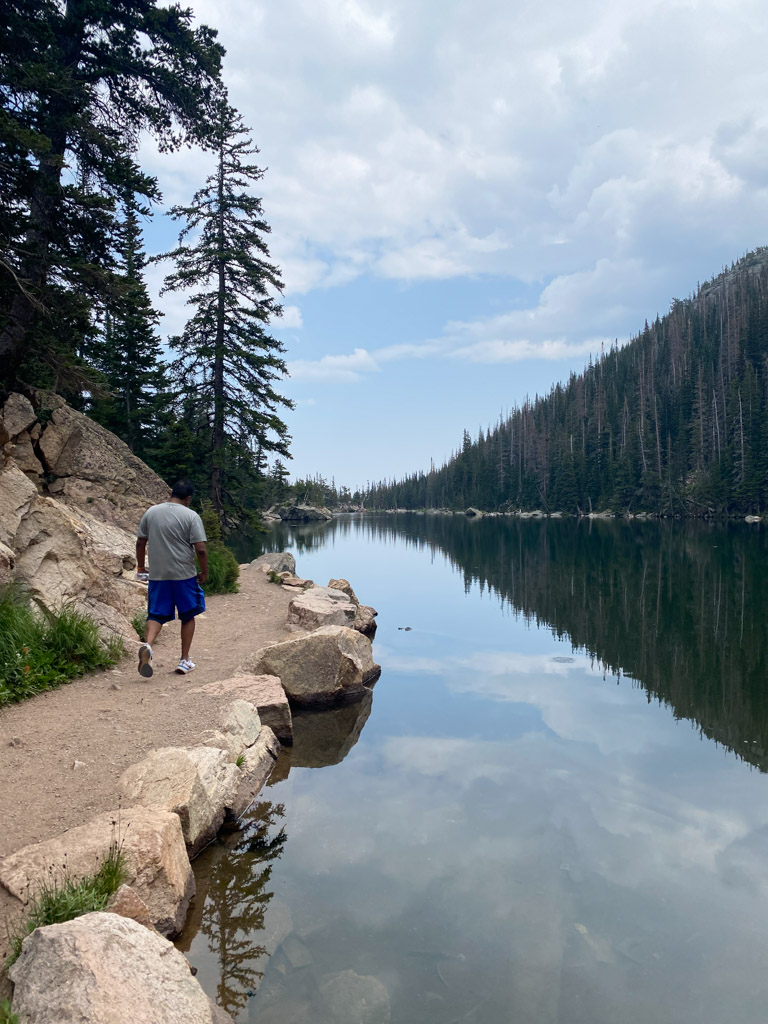
Gem Lake
Hiking Distance: 3.4 miles
Trail Difficulty: Moderate/Strenuous
Approx Time Needed: 2 to 3 hours
Location: Lumpy Ridge Trailhead. This trailhead is located just north of Estes Park. To get here, take Devils Gulch Road to Lumpy Ridge Road.
Gem Lake is a short but strenuous hike in Rocky Mountain National Park. You get to visit a pretty lake, aspen groves and enjoy sweeping views of Estes Park with Longs Peak in the distance.
Begin the hike at the Lumpy Ridge trailhead, where hikers walk through a narrow canyon, which soon reveals itself with views of Estes Park, along with mountain views just as you approach Gem Lake.
Ute Trail to Tombstone Ridge
Hiking Distance: 4 miles
Trail Difficulty: Easy to moderate
Approx Time Needed: 1.5 to 3 hours
Location: Ute Trailhead on Trail Ridge Road, 7 miles east of the Alpine Visitor Center
This is one of the easy hikes in the Rocky Mountain National park and pretty rewarding too. You hike through the alpine tundra with awesome views of Longs Peak and the Continental Divide.
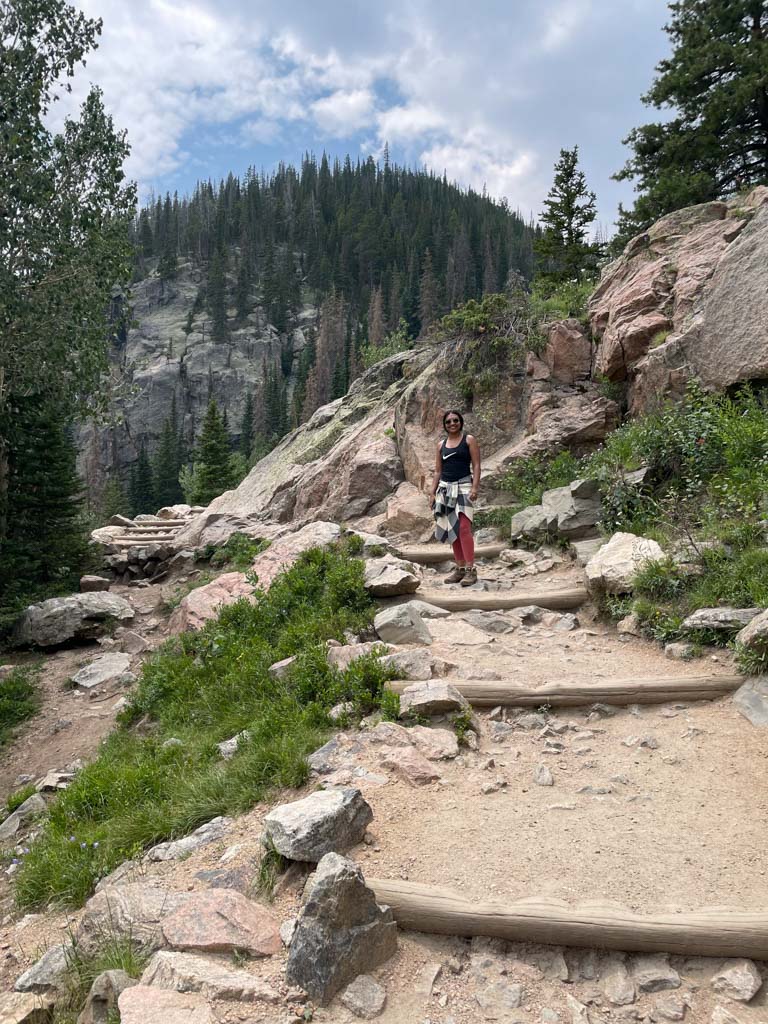
Nymph, Dream & Emerald Lakes
Hiking Distance: 3.6 miles
Trail Difficulty: Easy to moderate
Approx Time Needed: 2 to 3 hours
Location: Bear Lake Trailhead, at the end of Bear Lake Road
This hike is one of the best things to do in Rocky Mountain National Park. On this hike, you get to see beautiful alpine lakes over a very short distance. It’s a great hike for families and makes a great intro to hiking in the park.
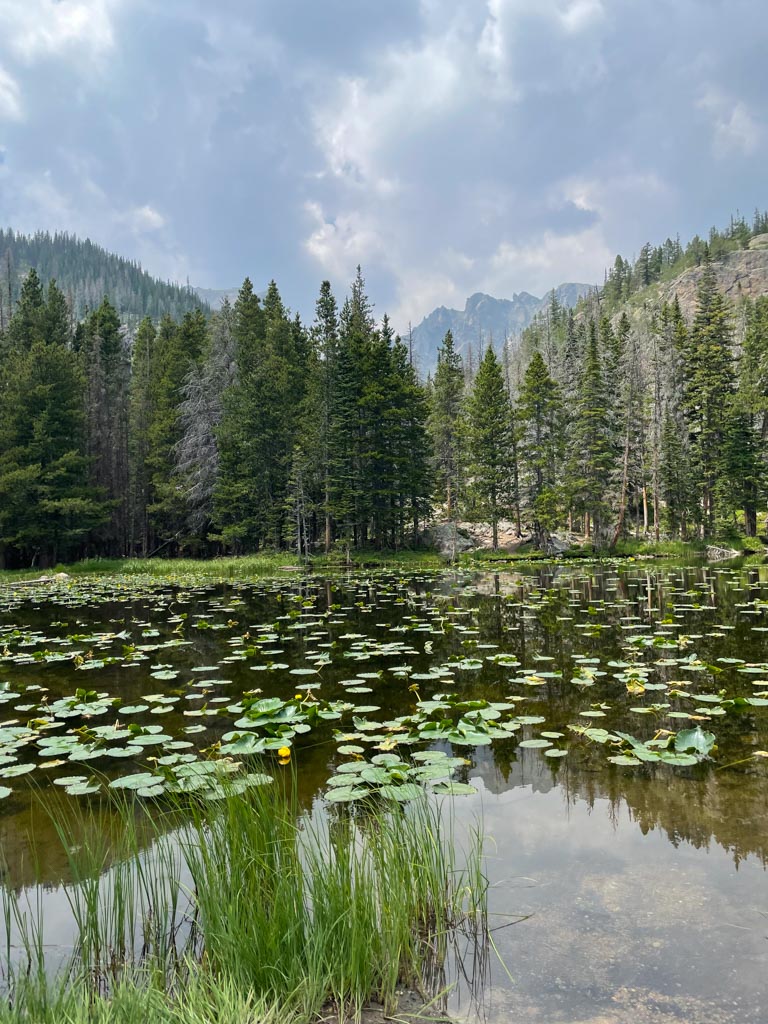
Due to the extreme popularity of the area, you may want to consider using the free park shuttle to reach the trailhead during peak tourist season.
Once at Nymph Lake, enjoy the views. This is the smallest of the three lakes and has many lily pads covering the lake.
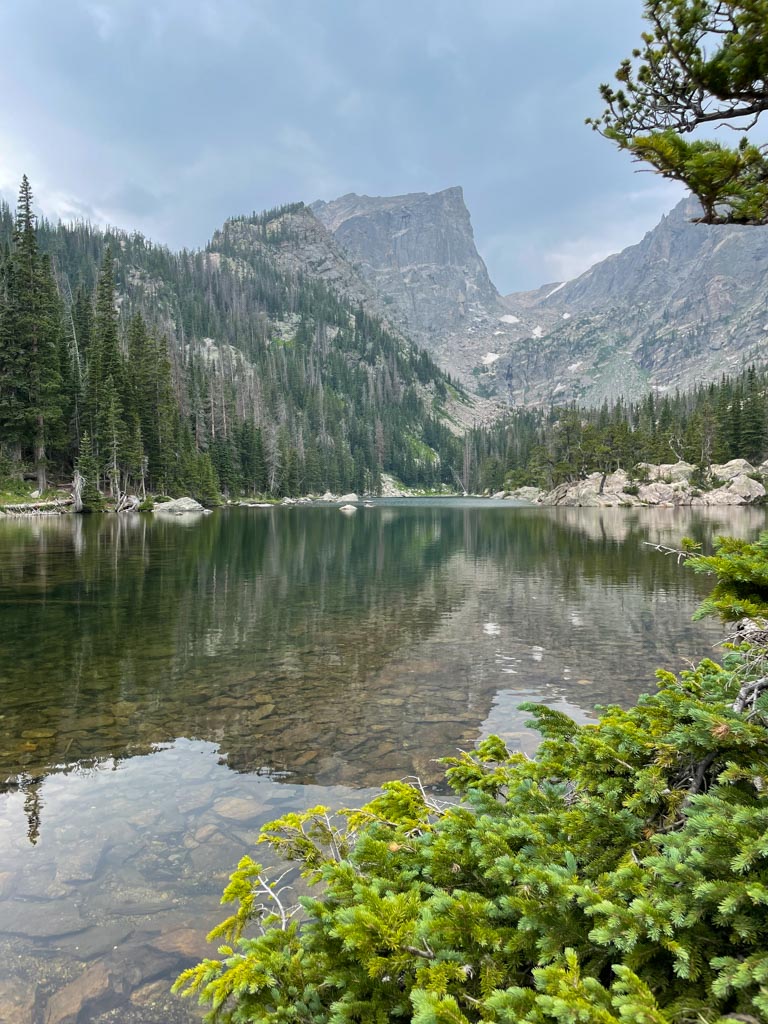
From Nymph Lake, it is just a half-mile walk to get to Dream Lake. This trail is a little bit steeper than the hike to get to Nymph Lake, there are some steps and steeper uphill climbs. But it is all worth it, Dream Lake is one of the prettiest lakes in Rocky Mountain National Park.
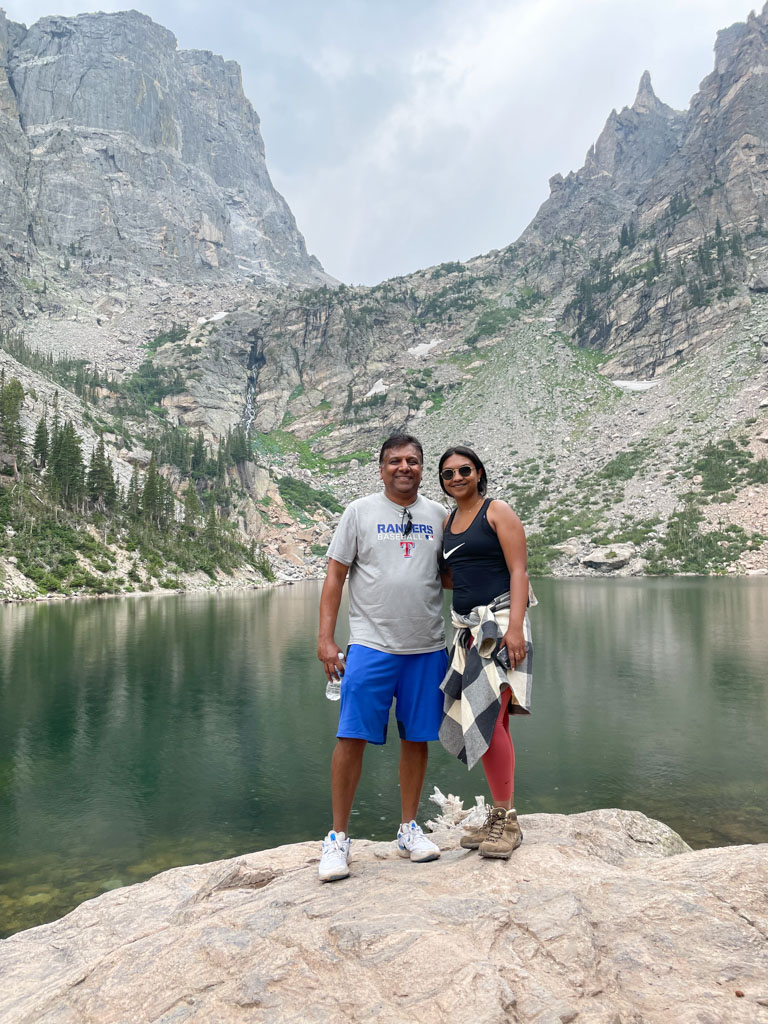
The trail ends at Emerald Lake. Hallett Peak and Flattop Mountain can be seen here. It makes for a great photo with the spectacular backdrop of Emerald Lake. The lake is fed by Tyndall Glacier, one of the last glaciers in Rocky Mountain National Park. The water flows from Emerald Lake to Dream Lake before heading into Glacier Gorge.
You can turn this into a five-lake hike by adding on an easy Bear Lake hike (mentioned above) and a less visited Lake Haiyaha. The trail to Lake Haiyaha starts on the Emerald Lake Trail, between Nymph Lake and Dream Lake and involves some uphill portions.
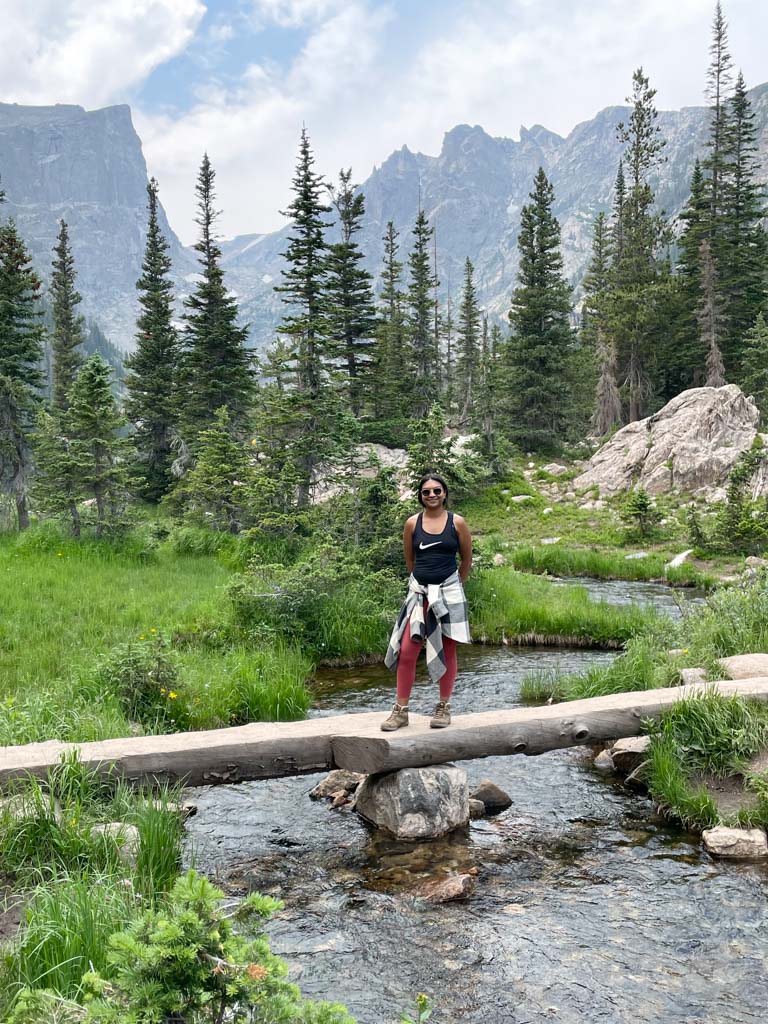
Have you done the 5 lakes trail in Zermatt?
Mills Lake, Black Lake & Ribbon Falls
Hiking Distance: 10 miles
Trail Difficulty: Moderate
Approx Time Needed: 5 to 7 hours
Location: Glacier Gorge Trailhead on Bear Lake Road
This is a very popular RMNP hike in the spring and summer, but also steals the show in the fall with the colorful aspen groves that surround it.
The hike to Mills Lake encompasses it all, colorful aspens, a subalpine lake, and a waterfall. The trailhead begins at the Glacier Gorge Trailhead, located along Bear Lake road. Within less than a mile in, you will encounter Alberta Falls (mentioned earlier), the majestic Glacier Gorge, and eventually Mills Lake.
Stay on the trail for another two more miles until you reach Black Lake. Although this is a moderate to difficult hike, it is well worth it. You will still Ribbon Falls on the way. Black Lake, a high-altitude glacial lake sitting above the more popular Mills Lake and Jewel Lake.
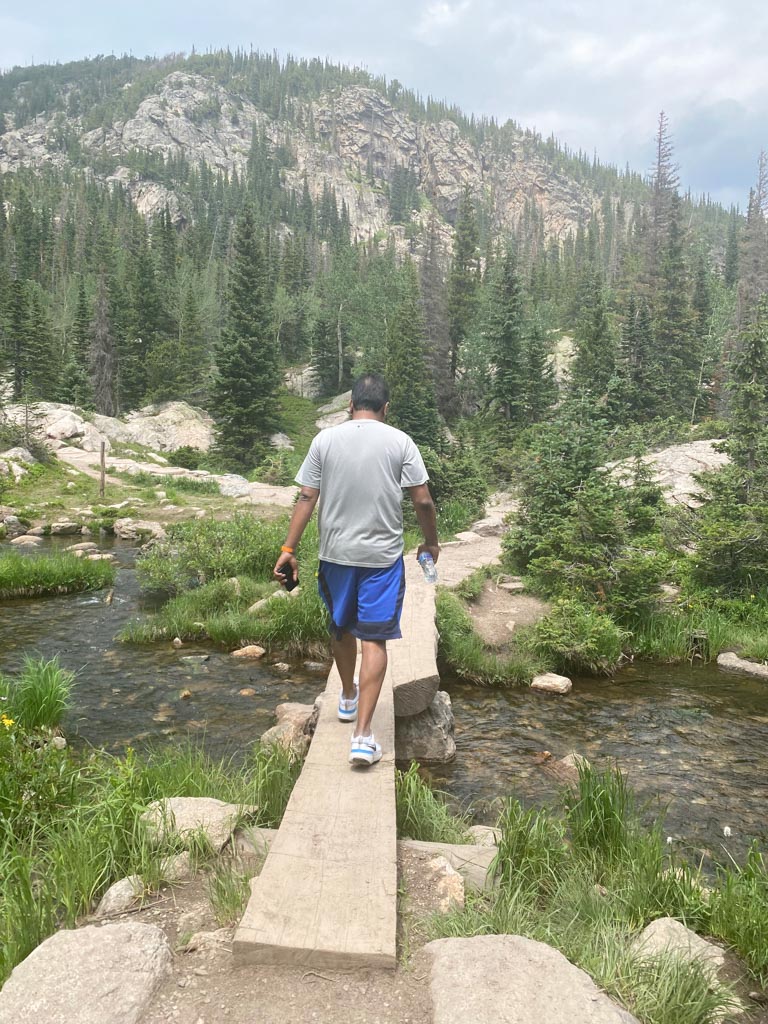
Best Hikes in Rocky Mountain National Park to See Fall Colors
Bierstadt Lake Loop
This timeless 3 mile loop is popular amongst both leaf peepers and wildlife-viewers with the route to the lake wrapped by pine and aspen groves. Begin the hike near Bierstadt Lake Trailhead, where you climb for a bit until you reach Bierstadt Moraine. As hikers continue to ascend, they will be rewarded with beautiful views at the top of the mountain peaks that make up the Continental Divide.
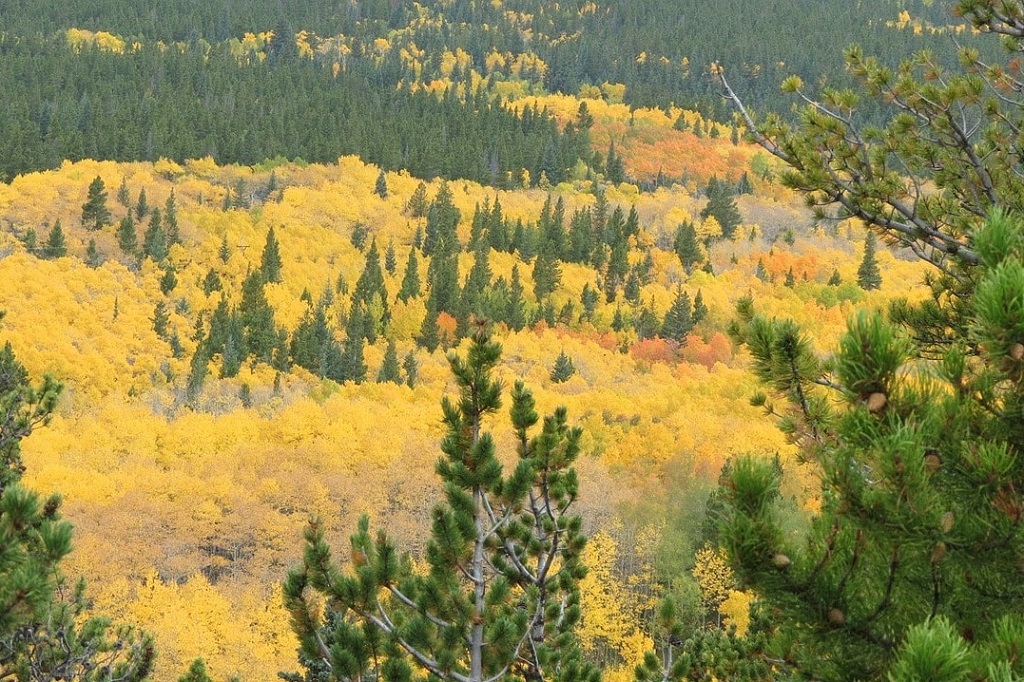
Fern Lake Trail to The Pool
The Pool via Fern Lake Trail is a popular 3.3 mile out and back trail located near Estes Park, Colorado. It features beautiful wildflowers during summer and fall colors come September and is good for all skill levels.
Take the easy, Fern Lake Trail to what the park calls, “The Pool,” where the Big Thompson River and Fern Creek converge at the Cub Lake Trailhead. Fern Lake trail follows the Big Thompson River to The Pool and meanders through forest and a few open meadow areas that offer good views of the Big Thompson Valley.
Along the way, gaze up at the whispering yellow aspens along with dense pine forests and Cottonwoods. The hike begins at the Moraine Park area at the Fern Lake Trailhead.
Wild Basin Trail to Ouzel Falls
This hike feels like you are on one of the most remote trails in Rocky Mountain National Park. Wild Basin Trail leads to some of its most stunning sights, especially during fall. The 3.1-mile out and back route will pass Calypso Cascades, Copeland Falls and eventually lead to Ouzel Falls, the park’s famous 40-foot waterfall.
Challenging & Longer Hikes at RMNP
Listed here are a few longer hikes in Rocky Mountain National Park. Please refer to the park website for the trailhead and additional information about RMNP day hikes.
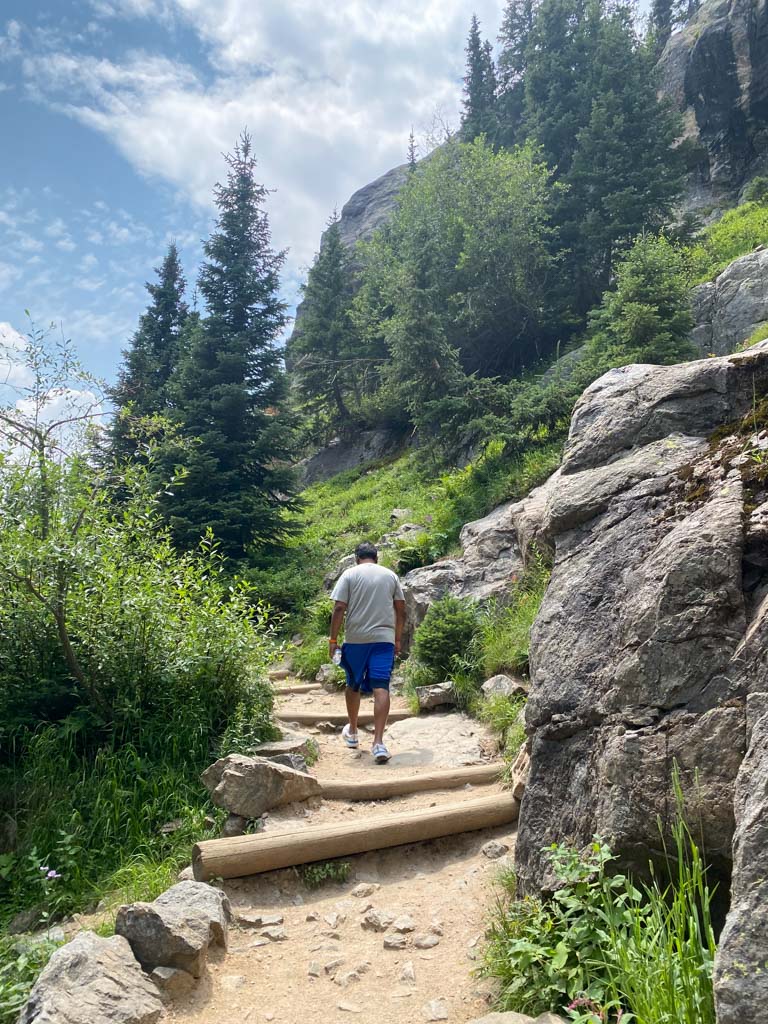
Deer Mountain
Distance: 6.2 miles, Moderate
Deer Mountain is considered one of the easiest mountain summit hikes in the RMNP. But there will be a lot of uphill parts. From the peak, you will have a great view over Moraine Park and out to Longs Peak.
Twin Sisters
Distance: 7.4 miles, Moderate
You get panoramic views of Longs Peak and Estes Park from the top of the Twin Sisters Peaks on this hike at the eastern edge of Rocky Mountain National Park.
Odessa Lake & Fern Lake
Distance: 7.5 to 10 miles, Moderate
The hike to Odessa Lake and onward to Fern Lake does not get that crowded compared to the Emerald Lake, and Dream Lake trail in Rocky Mountain National Park, but you get to see a few more alpine lakes on this hike.
Sky Pond
Distance: 9.5 miles, Strenuous
Sky Pond is one of the best hikes in Rocky Mountain National Park and offers views of waterfalls, alpine lakes, high mountain views, and fun river and stream crossings.
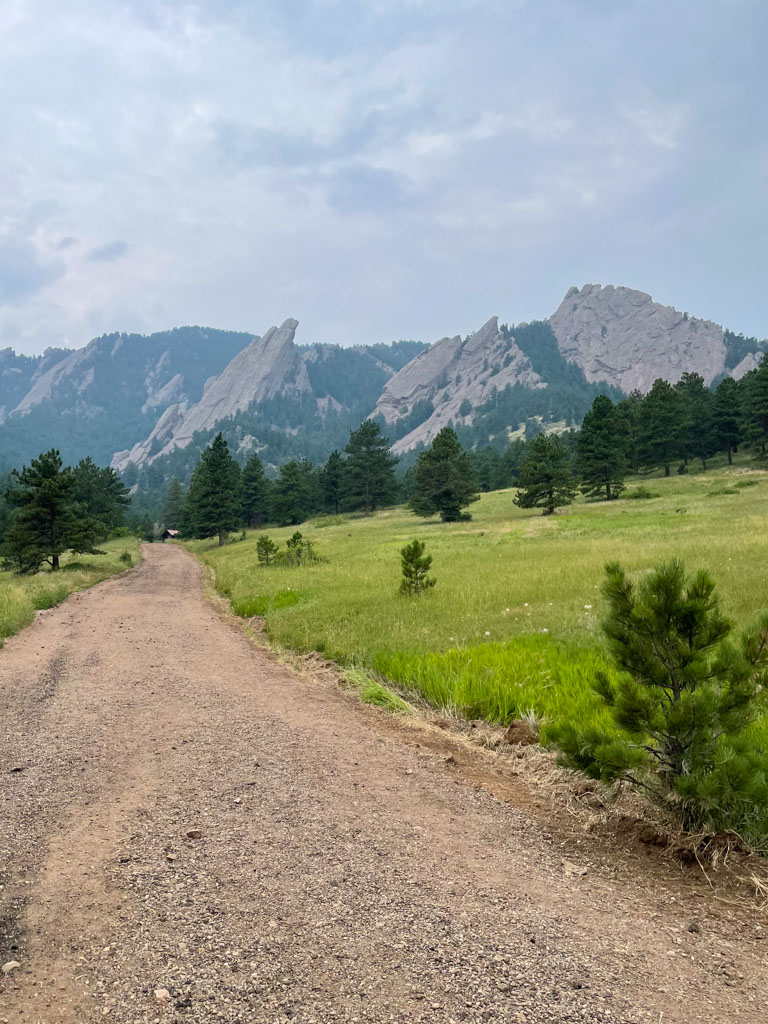
Chasm Lake
Distance: 9 miles, Strenuous
You can photograph a classic sunrise shot of Longs Peak on this epic hike. A fantastic hike with sublime views in Rocky Mountain National Park, if you have the energy.
Continental Divide Trail to Mount Ida
Distance: 9.8 miles, Strenuous
Hallett Peak
Distance: 10.4 miles, Strenuous
Longs Peak
Distance: 15 miles, Strenuous
At 14,259 feet, the only fourteener on this list! You will ascend more than 5,000 feet on this climb. The hike up Longs Peak is one of the most epic hikes in Rocky Mountain National Park.
Rocky Mountain Trails, Lakes Hikes Map
How to Use This Map: Use your fingers or computer mouse to zoom in on the details. Click the tab in the top left-hand corner of the map to view the layers (places and the driving route). You can click the icons on the map to get more information about each point of interest.
If you click the star next to the title of the map, this map will be added to your Google Maps account. To view it on your phone or computer, open Google Maps, click the menu button, go to “Your Places,” click Maps, and you will see this map on the list.
2. Go on some Scenic Drives
Trail Ridge Road
The park’s Trail Ridge covers 48 miles between Estes Park on the park’s east side and Grand Lake on the west, and is one of the major attraction for Rocky Mountain park visitors today. Completed in 1932, Trail Ridge Road called a “scenic wonder road of the world,” takes you to over 12,000 feet. It is the highest continuous paved highway in the nation. This drive will climb 4,000 feet in a matter of minutes!
Bear Lake Road – Estes Park
Bear Lake Road is another popular scenic alpine drive within Rocky Mountain National Park. It is accessible all year round from nearby Estes Park. There is so much to do here like seeing wildlife and hiking.
On the Bear Lake Road, motorists and road cyclists can travel through 10.4 miles of breathtaking alpine wilderness (from 7,840 ft to 9,475 ft in elevation). It’s among the best drives in RMNP for fall colors. At the end of the road, the Bear Lake Trailhead is a great place to start an afternoon hike.
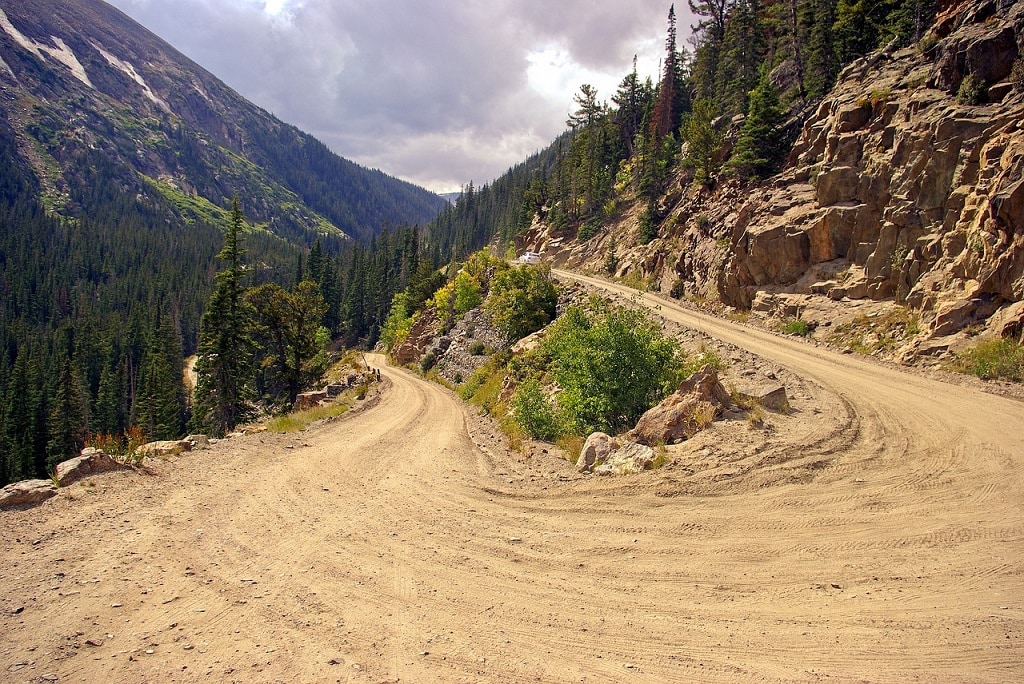
Old Fall River Road and Chasm Falls
Old Fall River Road was the first road that led into Rocky Mountain National Park and was opened in 1920. This one-way, gravel road is 11 miles long and it takes about one hour to drive it.
Starting at Horseshoe Park and ending at the Alpine Visitor Center, this road makes for a thrilling drive. This road has numerous switchbacks and there are no guard rails.
Along the drive, stop at Chasm Falls. It is a very short walk from the parking area to a viewpoint of this waterfall. The hike is 1.7 miles round trip and takes 1 to 1.5 hours.
3. See Wildlife in RMNP
If you are lucky, you will see plenty of wildlife from your car, when driving through RMNP. The park is estimated to have an elk population between 600 and 800, while the bighorn sheep population is around 350 and 280 bird species. Bighorn sheep are usually active throughout the day and can often be seen posing on cliffs at higher elevations.
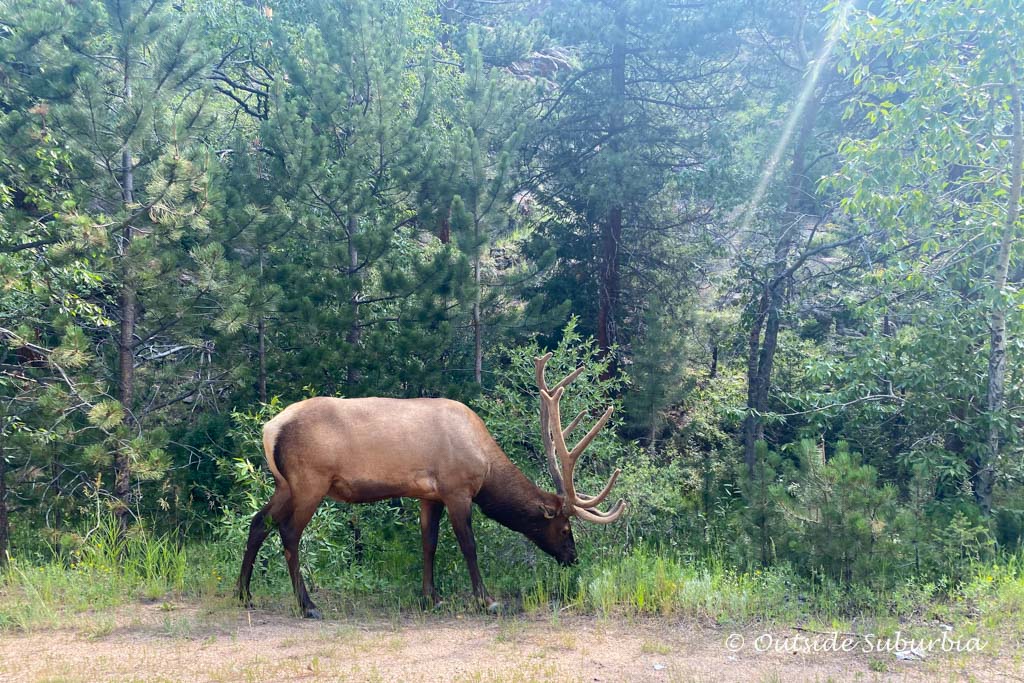
Herds of elk can be usually be found in the valley at Moraine Park and it is one of the best places in Rocky Mountain National Park to see wildlife.
The Grand Tetons are another great place to see Elks.
4. Learn some history at the Holzwarth Site
John Holzwarth and his family who were immigrants from Germany built a small cabin in the Kawuneeche Valley in 1917. Over the following years, the family opened a guest ranch, which they called the Holzwarth Trout Lodge and then a dude ranch on the east side of the Colorado River, called Never Summer Ranch. Many historians believe this to be the first dude ranch in Colorado.
In 1974, the property was purchased by The Nature Conservancy and then became part of the national park. Visitors to the park can tour the property to learn more. During the summer months, volunteers offer daily tours of the historic Holzwarth site.
5. Try some Winter Activities at RMNP
There is no doubt that Rocky Mountain National Park is a great summer and fall destination but it is also great to explore in the winter months. The winter landscape is just magical. Having spent a week experiencing winter activities in Breck, CO, I feel like we are ready for more!
The winter months (December through May) are a great time to visit Rocky Mountain National Park. Much of the park is covered in snow and many of the park trails are accessible – by snowshoeing or cross-country skiing.
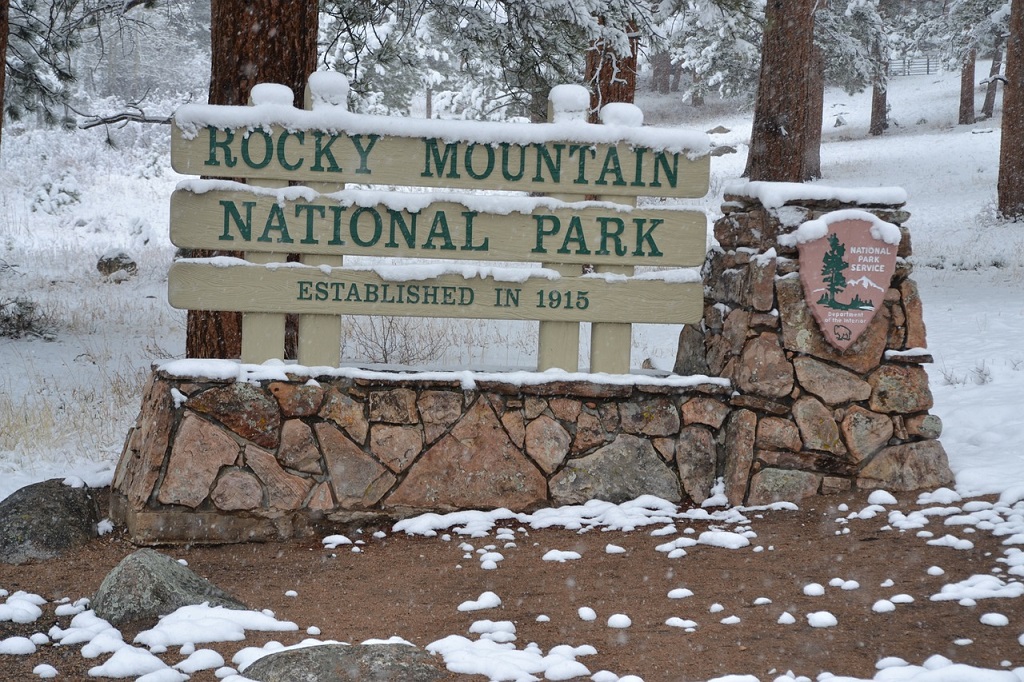
Best Time to Visit Rocky Mountain National Park
Plan your visit for the summer and early fall if you want full access to Rocky Mountain Nationa park, which includes driving Trail Ridge Road and Old Fall River Road. This is when these roads are typically open and the best time to go on a few hikes. Summer, as you would expect is the busiest time to visit Rocky Mountain National Park!
If you are into leaf-peeping, and maybe enjoy some fall drives (on my wishlist), autumn is a lovely time to visit RMNP. Months of September and October are the best time to visit Rocky Mountain National Park.
When the temperatures start to dip crowds disappear. But the park is still beautiful to explore. Get those snowshoes out and enjoy some winter scenery at Rocky Mountain National Park.
Snow can linger on some parts of the trails well into late spring, we visited RMNP end of July and it was perfect!
A visual story of the best hike at Rocky Mountain National Park
Where to Stay
Wondering where to stay while visiting Rocky Mountain National Park? We stayed in Denver and make the 80 miles drive to RMNP every day. If you want to stay inside the park, there are not many options, you will be limited to campgrounds. There is no lodging inside Rocky Mountain National Park.
Some campgrounds to consider are Aspenglen, Moraine Park, and Glacier Basin. They are the most popular campgrounds in RMNP and these get reserved well in advance. The campgrounds in Longs Peak and Timber Creek are easier to get reservations.
Not into camping, look at the towns on the outskirts of RMNP for your stay. Estes Park is the main gateway to Rocky Mountain National Park, and for first-time visitors, it offers the easiest way to explore the region. You will find many cabins, a few nice hotels, and many RMNP excursion providers in Estes Park.
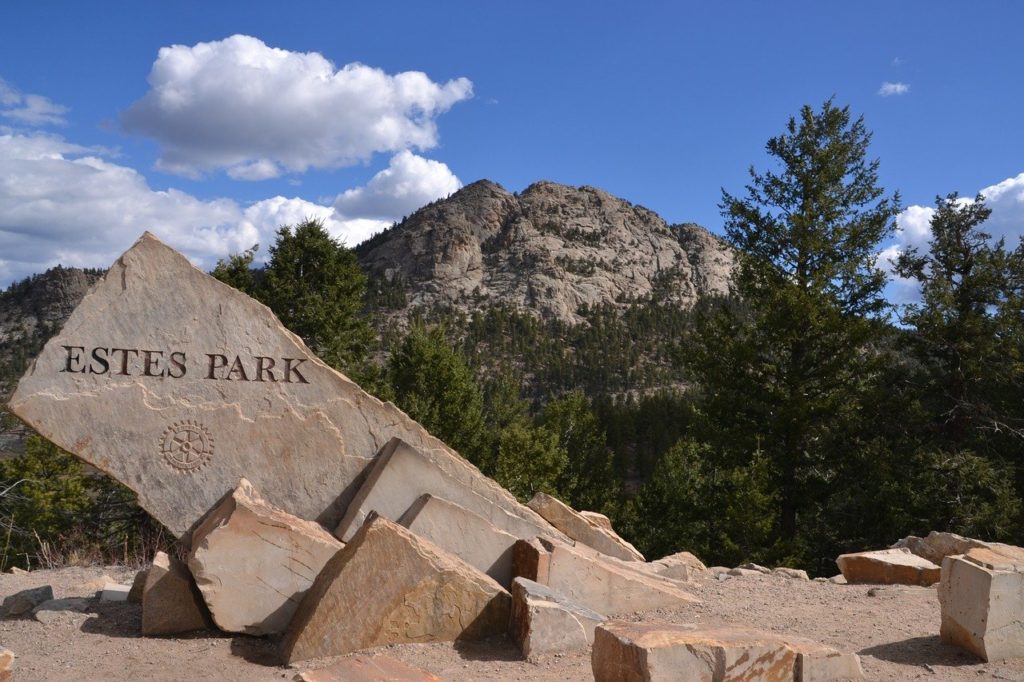
I love this Estes Park Resort, the only lodging and luxe stay overlooking Lake Estes, and the peaks of Rocky Mountain National Park.
Tips for Visiting RMNP
If you are planning to visit Rocky Mountain National Park from May 28 to October 11, 2021, you will need to reserve a permit in advance. Visit recreation.gov to make your reservation. If you don’t have a reservation, you will not be allowed to enter the park.
Park Fee is $25 per vehicle, valid for 1 day. Rocky Mountain National Park Annual Pass is $70. If you plan to Rocky Mountain National Park along with other national parks, consider purchasing America the Beautiful Pass, which is $80 and valid for all of the national parks for one year.
Park Hours: Park entrances are open 24 hours a day, 365 days per year.
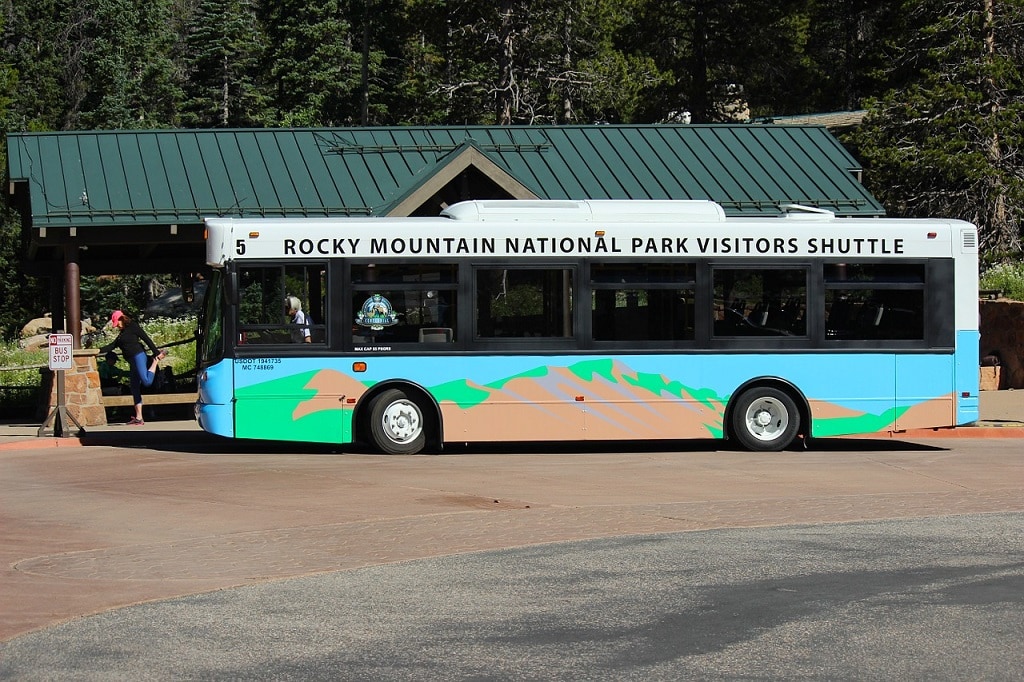
During the busy summer months, a free shuttle service is provided by the national park service. The shuttle buses connect Moraine Park and Bear Lake, starting at 6:30 a.m. and schedules can be found on the park’s website and at park shuttle stops. See more on the National Park Service website.
As you would expect the air is thinner at high elevations which results in increased water evaporation from your lungs. Bring lots of drinking water.
Allow yourself some time to get used to the altitude, shortness in breathing and headache are usually the symptoms of altitude sickness.
There are not many places to eat inside the park, bring picnic lunches and snacks.
Wear sunscreen, a hat, sunglasses, and wearing a long sleeved shirt if you are out in the sun for an extended period. Bring layers if you are hiking in different elevations. Ultraviolet light is stronger in the mountains because there is less atmosphere for the sunlight to pass through.
See this post if you need some help packing for a mountain adventure.
PIN IT FOR LATER
Note: This post may contain affiliate links, partnership or sponsored content. If you purchase an item via one of these links, we may receive a small commission at no extra charge to you. But as always images and opinions are our own. For more information on our affiliates and privacy policy at Outside Suburbia see here.
CONNECT WITH US
